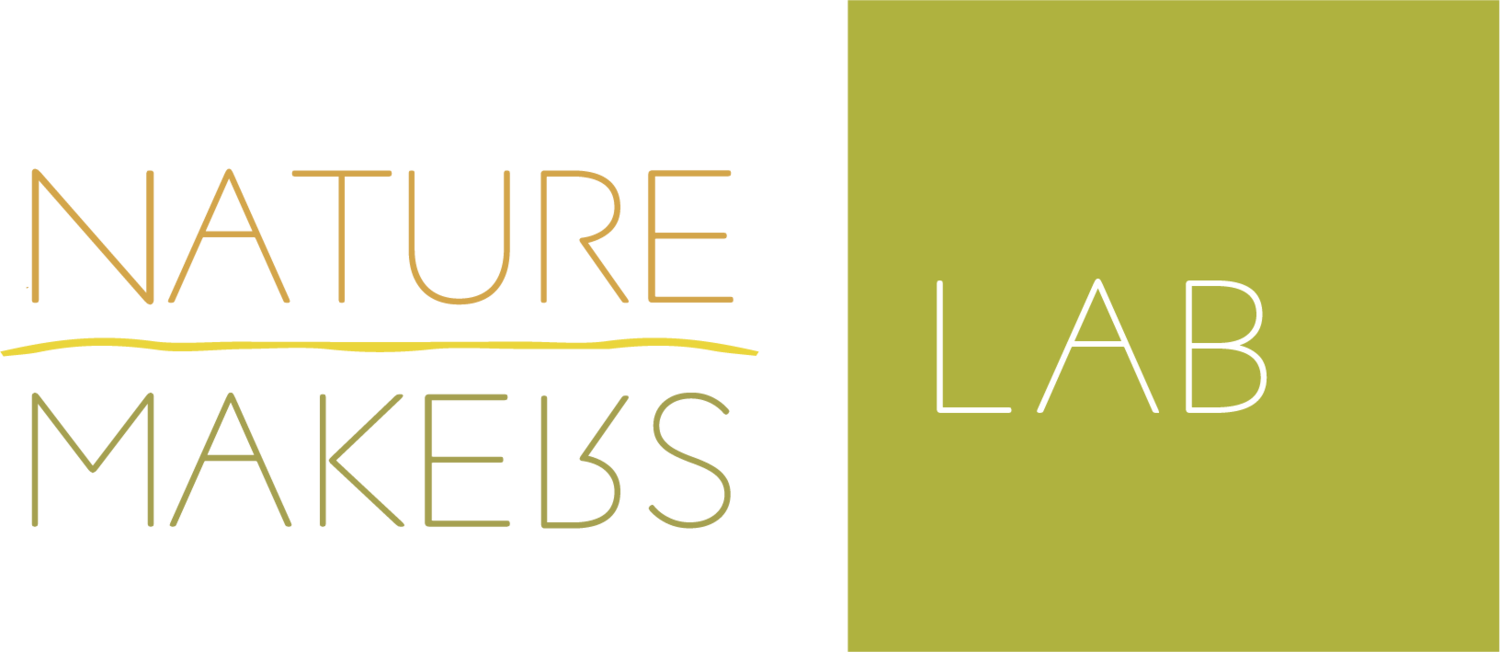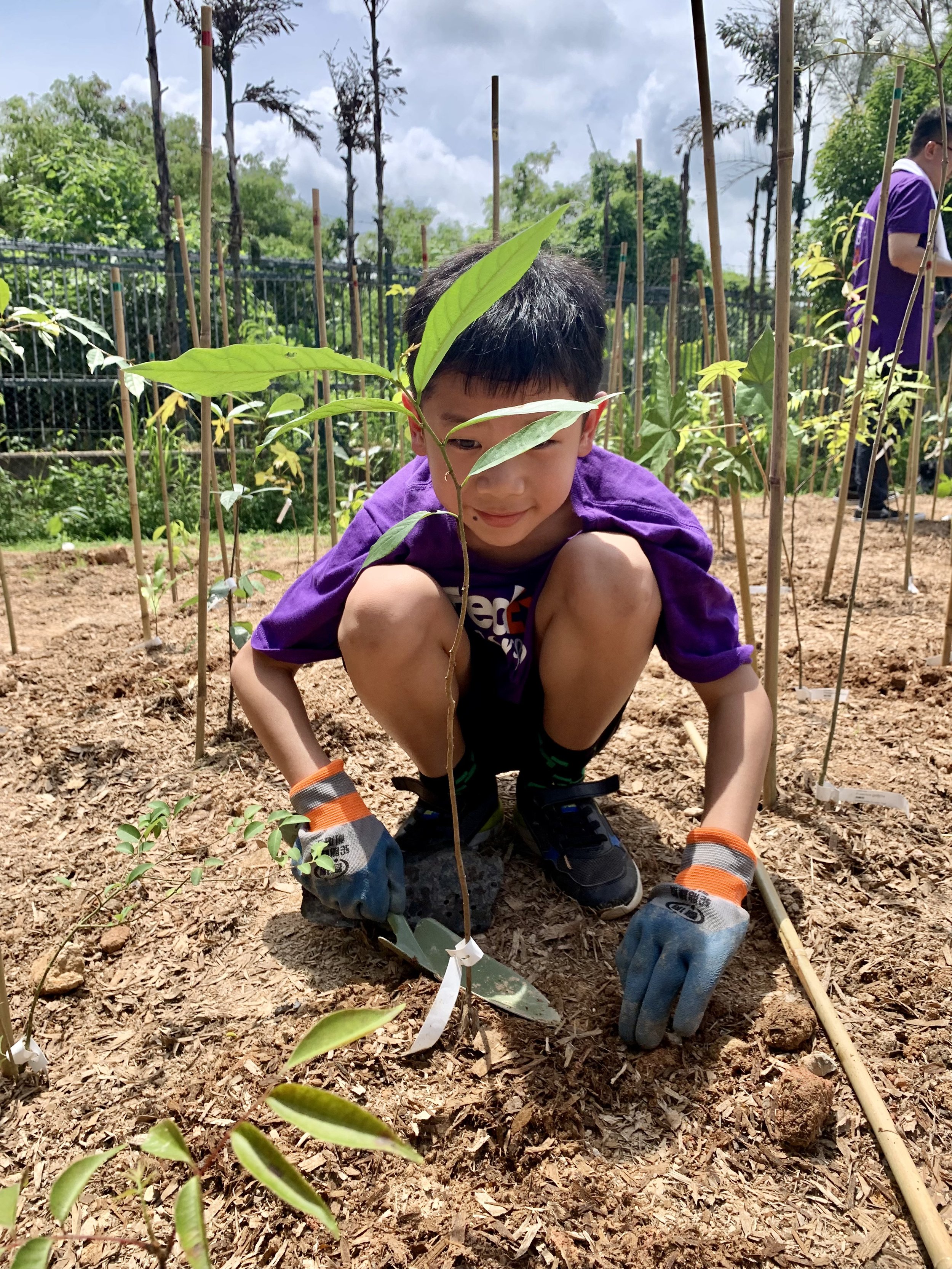5 new Forest Circles at the WEEE · PARK
With sizzling summer temperatures hitting Hong Kong these last few weeks, we’re reminded of how critical it is to take action and help cool down our cities.
Over 2 days towards the end of June, Nature Makers Lab led 60 volunteers to plant 700 tree and shrub saplings in Tuen Mun’s WEEE · PARK — Hong Kong’s state-of-the-art Waste Electrical and Electronic Equipment (WEEE) treatment and recycling facility.
Temperatures reached 34°C under the sun, but the tree planters pushed through the heat, enthusiastically digging and pressing down saplings, before covering our forest floor with dry, cut grass as mulch. Some of the most impressive among them were the 70+ year old volunteers from Endeavour Endeavour Environmental Education Foundation (弘毅), and residents of sub-divided flats (often referred to as ‘cage homes’) who were introduced to the activity through Concern for Grassroots Livelihood Alliance (關注草根生活聯盟). People were hot and tired, but excited to be outdoors, touching the soil, and being part of having a positive impact on the planet.
“People often think that environmental work is only for rich people, this is a good chance to change that mindset with exposure to things that anyone can take part in,” shared Evan from 關草聯。It was great to see some of the kids pulling off their gloves after a planting a few saplings, preferring to gently handle the trees and press the earth with their bare hands.
“I brought my son with me today, to get more exposure to nature.” said Franco from FedEx, a key sponsor of the event. “He doesn’t know anything about plants. Even like a banana, he only knows that it’s food, not where it comes from.”
We kicked off every session with a short briefing for volunteers, so that they could learn more about the Miyawaki method, why we were doing this, and shared information about some of the 45 tree species we were planting, so that they could start thinking about things like:
what is edible, like Canarium Pimela (Chinese Black Olive)
what is liked by animals, like Choerospondias axillaris (Hog Plum) and bees, like Myrsine seguinii
what has an interesting use, such as for essential oils (Desmos chinensis), wax (Toxicodendron succedaneum) or blue dye (Wrightia laevis).
“I have recorded every species for myself so that if I come in the future, I can find it next time! Also, this way I can learn about the species I’ve planted.” said Ho Yau Mei from Endeavour.
This was the first time most volunteers were exposed to the Miyawaki method, and those who had been involved in other tree planting before rarely had the opportunity to dig the holes themselves, or plant as many species in one go. “The fact that the soil has been prepared, and you have organized every species to be tagged and have an order that you want to plant them. This is very interesting, I have learned a lot today.” said KK from Footprints NGO. “Also, it’s great to be able to do this in Hong Kong. Usually we have to go to China!”
The energy and enthusiasm of volunteers showed that there is a hunger to be part of these types of activities in the city, where many people don’t get a chance to get up close and personal with soil and local biodiversity. We often joke that Hong Kong has the opposite problem of most forest makers around the world — money you can find, but in this dense environment, where can we plant?
Dream team: Nature Makers Lab facilitators
In the end, 5 forest circles ranging in size from 12.5m2 to 65m2 were planted in the north end of the WEEE · PARK. These circles are linked together by a simple path made from wood chips, so that as the forests grow, visitors can come and spend time in the greenery and breathe in the fresh air without disturbing the ecosystems. Many volunteers were eager to come and visit again in 2 years to see the difference, and have a guided tour of the WEEE · PARK as well!
Let’s hope that this forest becomes a new hotspot for biodiversity and human visitors as well.
We would like to thank ALBA Integrated Waste Solutions, FedEx, SUGi and Arbor Day Foundation for helping to make this forest happen.
And a big thank you to the volunteers from:
Footprints NGO (足印)
Concern for Grassroots Livelihood Alliance (關注草根生活聯盟)
and staff from ALBA IWS














